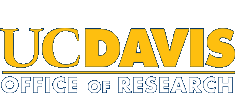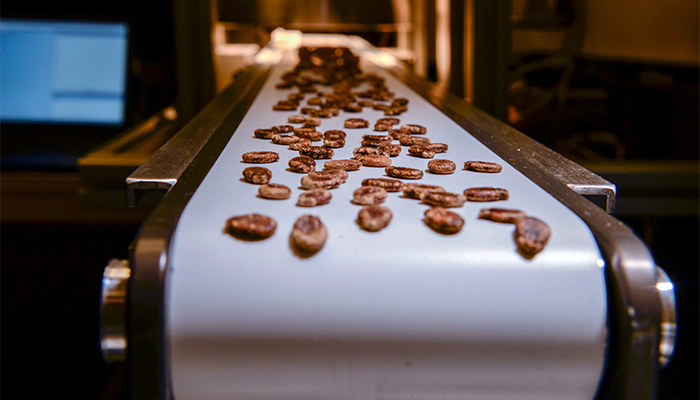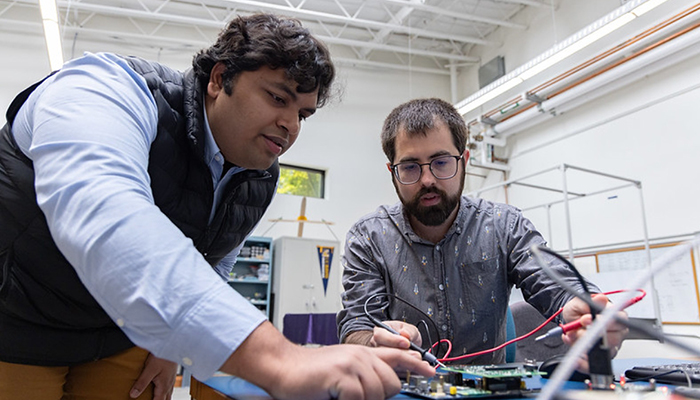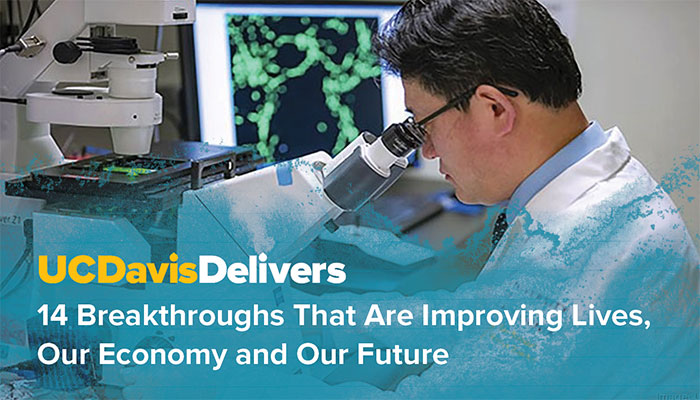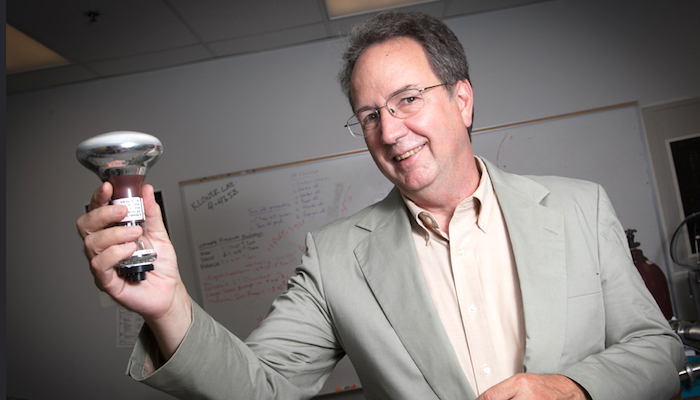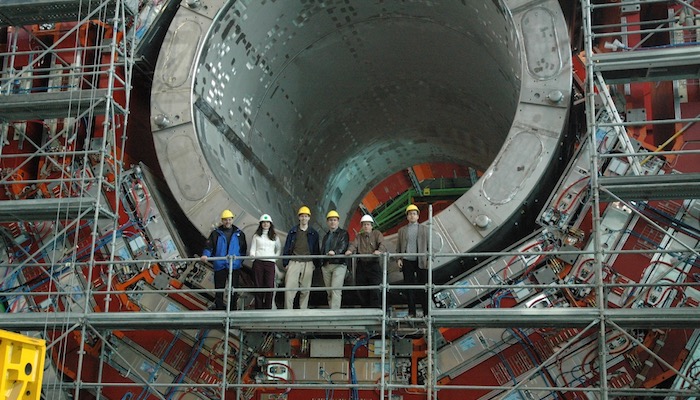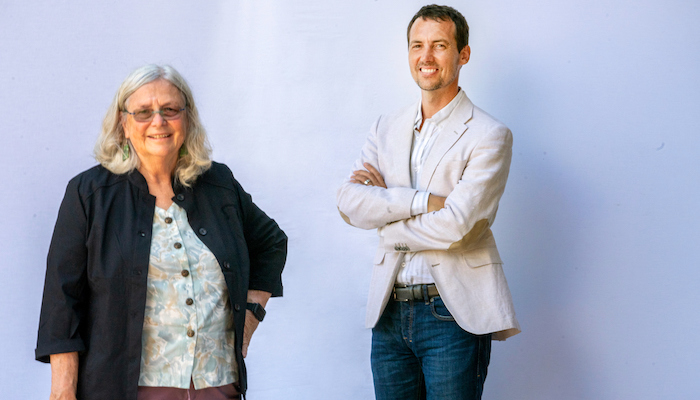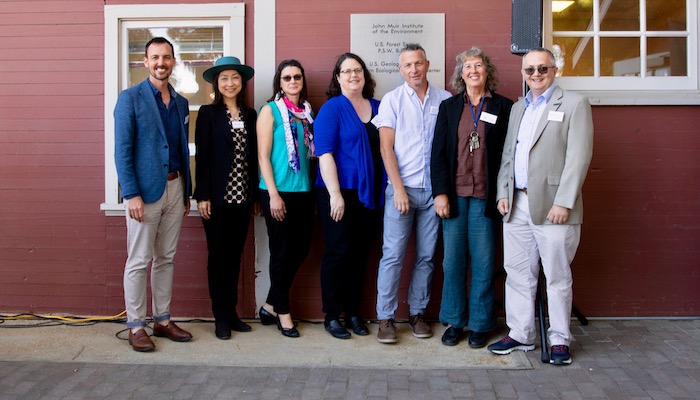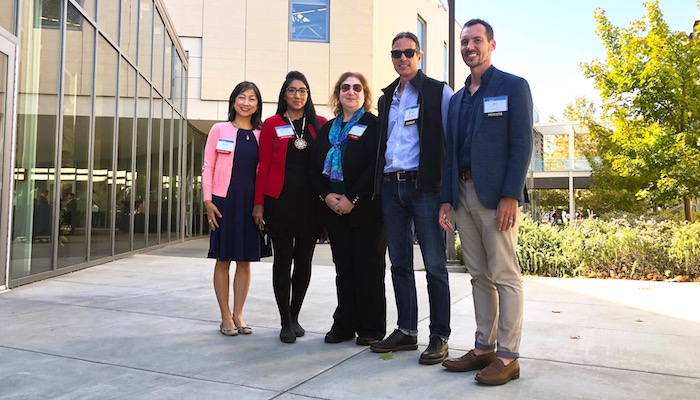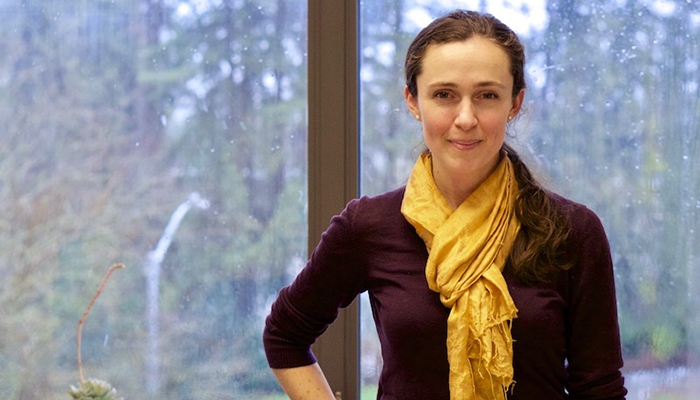Startup Uses Advanced Imaging Technology and Machine Learning to Sort Seeds and Insects
By Lisa Howard
Christian Nansen, an associate professor in the UC Davis Department of Entomology and Nematology, has launched a startup, Spectral Analytix, to apply machine vision and machine learning to the classification and sorting of seeds and insects.
“The idea is to combine machine vision, robotics and machine learning so you have an automatic eye, an automated arm and an automated brain,” said Nansen. “If you automate those three components you end up with a system that can automatically classify or sort whatever you are working with.”
For the machine “vision,” Nansen works with hyperspectral cameras, which collect data at very high spectral resolution. “The camera on your phone divides light into three wavelengths—red, blue and green,” said Nansen. “You can think of it like a cake with three layers—for each pixel you have three values. With a hyperspectral camera you have 250 bands, so the ‘cake’ now has 250 layers.”
Hyperspectral imaging is used for a wide variety of applications, from mining to surveillance to investigating works of art. Paired with machine learning, hyperspectral imaging is widely used in food processing and recycling industries for sorting.
Several aspects of crop breeding and commercialization of crop seeds involve inspection and quality control.
“Often, these inspection and control measures are time consuming and rely on highly trained technicians. They may also be associated with consistency challenges due to human error. So, replacing them with automated procedures can improve such inspection and control measures and also enable people to focus on other tasks that involve higher levels of complexity,” said Nansen.
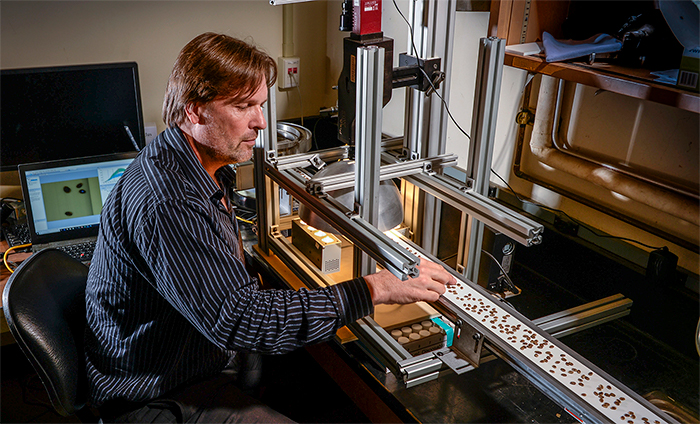
Christian Nansen, an associate professor in the UC Davis Department of Entomology and Nematology, has launched a startup, Spectral Analytix, that utilizes machine vision, robotics and machine learning to sort or classify seeds. (Hector Amezcua/UC Davis)
Since 2003, Nansen has conducted research on applications of hyperspectral imaging in agriculture and has published extensively on classification algorithms, data processing steps, and specific applications of machine vision.
The first target market for Spectral Analytix is the seed industry, sorting dead seeds from those that are alive. “Crop breeders and vendors of crops seeds need fast and non-destructive methods to eliminate non-viable seeds,” said Nansen.
In addition to viability, his system will also be able to recognize the chromosomal makeup of seeds, sorting for desirable genetic features. “Typically, to find out whether a seed is triploid, diploid or tetraploid, it would have to be looked at by a specially trained person,” said Nansen. Triploid seeds, for example, are used to create seedless fruits, such as seedless watermelons. “The goal is to develop classification algorithms that can separate seeds based on ploidy.”
Another application where the entomologist sees tremendous potential is, perhaps not surprisingly, with bugs.
“Imagine you have samples of insects that carry viruses or diseases to crop plants. Or you have mosquitoes vectoring malaria or West Nile,” said Nansen. “You could put these insects into a machine system and know whether these particular insects are carrying plant diseases or West Nile or malaria.”
With help from UC Davis Venture Catalyst, Nansen decided to move forward with plans to commercialize the technology and established Spectral Analytix as a C corporation.
“Overall I think there’s a tremendous understanding that technology like this will revolutionize agriculture. There’s both a need and a desire,” said Nansen.
Contact
- Lisa Howard, UC Davis Office of Research, [email protected]
- Christian Nansen, Department of Entomology and Nematology, [email protected]
Resources
- Spectral Analytix
- UC Davis Venture Catalyst
- Media Kit
Latest News & Events
